The German Federal Institute for Risk Assessment (BfR) has recently published three new reports on nanotechnology: a Delphi study on nanotechnology, a report on Perception of Nanotechnology in Internet-based Discussions, and Risk Perception of Nanotechnology - Analysis of Media Coverage.
Sep 3rd, 2010
Read more
The study 'Nanotechnology in the Food Sector', commissioned by the Swiss Centre for Technology Assessment TA-SWISS, is now available in English. The study provides an overview of nanomaterials already used in the food sector with a focus on the Swiss market and an analysis of the existing legal framework.
Sep 3rd, 2010
Read more
A UCLA team, led by professor of chemistry and biochemistry Xiangfeng Duan, has developed a new fabrication process for graphene transistors using a nanowire as the self-aligned gate.
Sep 3rd, 2010
Read more
A network of filamentary conducting paths is behind the transition between insulating and conducting states in complex oxides.
Sep 3rd, 2010
Read more
Glucose meters and the appropriate test strips for diabetics are expensive. This however might change, since scientists at the Institute of Printing Science and Technology (IDD) at TU Darmstadt are working on a sensor making the electronic devices considerably cheaper. The new sensor is not based on silicon as conducting material, but on plastics.
Sep 3rd, 2010
Read more
 Modelling zinc oxide nanoparticle formation could provide new insights into how snowflakes form as well as aiding nanoscale device research, say Chinese scientists.
Modelling zinc oxide nanoparticle formation could provide new insights into how snowflakes form as well as aiding nanoscale device research, say Chinese scientists.
Sep 3rd, 2010
Read more
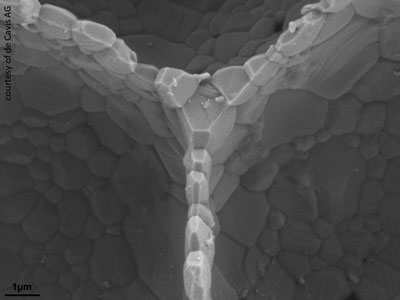 The Institut for Nonmetallic Inorganic Materials develops ceramic foams intended for use as energy-efficient thermal insulations in blast furnaces, as bone substitutes and for the controlled release of active ingredients in medicine.
The Institut for Nonmetallic Inorganic Materials develops ceramic foams intended for use as energy-efficient thermal insulations in blast furnaces, as bone substitutes and for the controlled release of active ingredients in medicine.
Sep 3rd, 2010
Read more
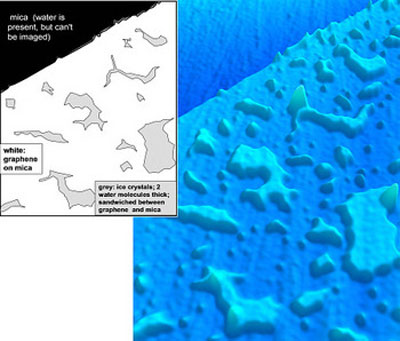 Researchers at the California Institute of Technology (Caltech) have devised a new technique - using a sheet of carbon just one atom thick - to visualize the structure of molecules. The technique, which was used to obtain the first direct images of how water coats surfaces at room temperature, can also be used to image a potentially unlimited number of other molecules, including antibodies and other biomolecules.
Researchers at the California Institute of Technology (Caltech) have devised a new technique - using a sheet of carbon just one atom thick - to visualize the structure of molecules. The technique, which was used to obtain the first direct images of how water coats surfaces at room temperature, can also be used to image a potentially unlimited number of other molecules, including antibodies and other biomolecules.
Sep 2nd, 2010
Read more
 Compounds made from renewable materials could be used for gas storage, food technologies.
Compounds made from renewable materials could be used for gas storage, food technologies.
Sep 2nd, 2010
Read more
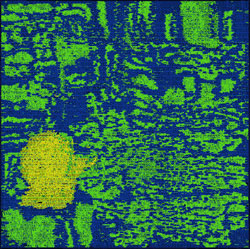 A new smartphone chip prototype under development at the University of California, San Diego will improve smartphone efficiency by making use of 'dark silicon' - the underused transistors in modern microprocessors.
A new smartphone chip prototype under development at the University of California, San Diego will improve smartphone efficiency by making use of 'dark silicon' - the underused transistors in modern microprocessors.
Sep 2nd, 2010
Read more
A visionary team of computer scientists and electrical engineers from six universities is proposing to deal with the downside of nanoscale computer components by re-thinking and enhancing the role that software can play in a new class of computing machines that are adaptive and highly energy efficient.
Sep 2nd, 2010
Read more
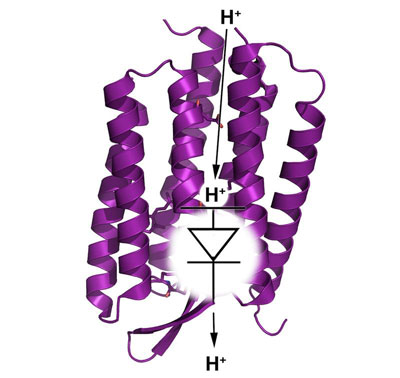 Biophysicists in Bochum have discovered a diode for protons: just like the electronic component determines the direction of flow of electric current, the 'proton diode' ensures that protons can only pass through a cell membrane in one direction. Water molecules play an important role here as active components of the diode.
Biophysicists in Bochum have discovered a diode for protons: just like the electronic component determines the direction of flow of electric current, the 'proton diode' ensures that protons can only pass through a cell membrane in one direction. Water molecules play an important role here as active components of the diode.
Sep 2nd, 2010
Read more
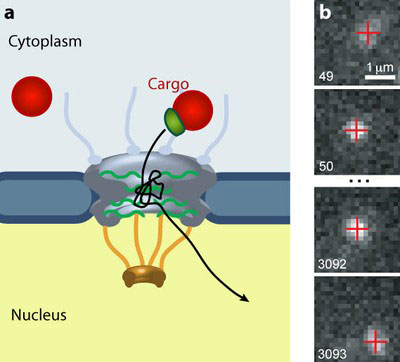 QB3 biophysicists have traced with unprecedented resolution the paths of cargos moving through the nuclear pore complex (NPC), a selective nanoscale aperture that controls access to the cell's nucleus, and answered several key questions about its function.
QB3 biophysicists have traced with unprecedented resolution the paths of cargos moving through the nuclear pore complex (NPC), a selective nanoscale aperture that controls access to the cell's nucleus, and answered several key questions about its function.
Sep 2nd, 2010
Read more
The Technology Strategy Board and the Engineering and Physical Sciences Research Council in the UK have jointly allocated up to GBP7m to invest in highly innovative, collaborative research projects looking at the use of novel nanoscale technologies to enable the next generation of solar energy harvesting.
Sep 2nd, 2010
Read more
Um potenzielle Risiken fuer den Menschen auszuschliessen, foerdert das Bundesministerium fuer Bildung und Forschung (BMBF) den Forschungsverbund CarboTox fuer drei Jahre mit rund 1,25 Millionen Euro.
Sep 2nd, 2010
Read more
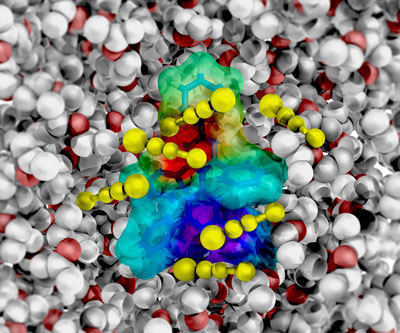 To watch a magician transform a vase of flowers into a rabbit, it's best to have a front-row seat. Likewise, for chemical transformations in solution, the best view belongs to the molecular spectators closest to the action.
To watch a magician transform a vase of flowers into a rabbit, it's best to have a front-row seat. Likewise, for chemical transformations in solution, the best view belongs to the molecular spectators closest to the action.
Sep 1st, 2010
Read more









 Subscribe to our Nanotechnology News feed
Subscribe to our Nanotechnology News feed